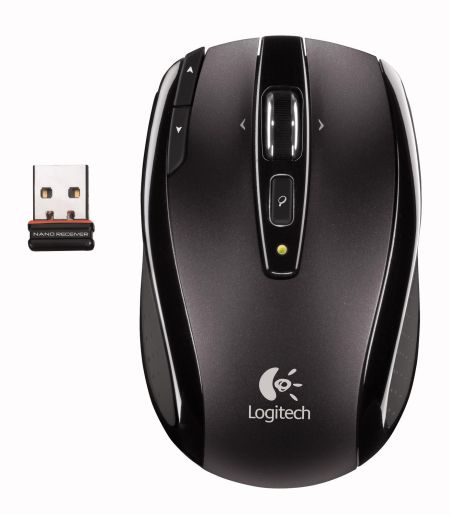Logitech's Wireless Ergonomics
Logitech VX Nano
Keyboards aren't the only devices that have had an ergonomic makeover. The other main human input device, the mouse, has had its pass through the ergonomics labs. The result is a generation of mice that fits snuggly in most hands, and offers more than just a pair of mouse buttons and a scroll wheel.
While the desktop mouse has had its makeover, the travel mouse has been left on the sidelines. Most are small oval USB devices, with small buttons and stiff wheels. They're generally uncomfortable, leaving hands cramping after just a few minutes work. Travel mice are pointing devices - they're not for design work, or for gaming. If you want to take advantage of ergonomic high-function devices, you'd need to carry a large desktop mouse with you.
Logitech's latest travel mouse is the VX Nano, which closely resembles the larger MX Revolution. There are a lot of similarities between the two mice, and they're obviously from the same design school. Both have Logitech's signature flywheel and large slide pads for smooth motion on most surfaces. However, it's clear that the VX Nano was designed for portability.
The most significant feature is the VX Nano's minute RF receiver. Like its larger siblings, the VX Nano uses a proprietary 2.4 GHz connection. That's where the similarity ends. The VX Nano's receiver is not much bigger than the USB port it plugs into. Measuring only 5mm x 12mm x 5mm, the receiver caps a standard USB plug. It's small enough to store inside the mouse for transit. It's small enough to sit in a USB socket without protruding too much, so it should slip into a laptop bag without any damage (to the receiver or the port).
Open the VX Nano's battery compartment and you'll see a slot marked "Nano Receiver." You can drop the receiver in here, so it won't be lost while you travel (it's also ideal for making sure you don't accidentally leave it transmitting while you're using your laptop on an airplane). You'll find that storing the receiver in the mouse also turns off the mouse's laser and transmitter, which saves battery life. It's also an interlock - so once the receiver is stored in the mouse you're unable to use the power button to turn it on. This will prevent the inevitable knocks and bumps when you travel from shortening battery life.
The mouse itself is ambidextrous, and should suit both left- and right-handed users. While most of the shell is a smooth, hard plastic, the left and right sides are padded, with a similar soft rubber-like material to the Wave's padded wrist rest. This makes the VX Nano surprisingly comfortable. It's small, so if you've got large hands you may find it a little awkward to use. We found it easy to switch to, and capable of being used to work with most productivity applications, as well as design and development tools.
Get Tom's Hardware's best news and in-depth reviews, straight to your inbox.
